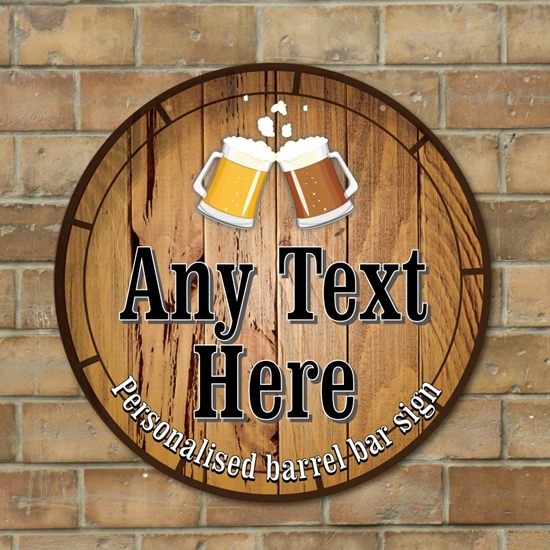New Facts To Selecting Bar Signs
How Do Bar Signs Differ In Terms Of Location?The location can make a significant impact on the effectiveness of bar signs. The style, design and location. are tailored to specific locations. Below is a breakdown of the ways bar signs vary based on their location:1. Exterior Signs
The goal of the signage is to entice customers and to create the impression of a distinct distinctiveness to the establishment.
Features: Eye at-tractive and frequently illuminated to increase visibility at night.
Materials: Strong materials like neon, metal, LED, or weather-resistant vinyl.
Examples: The main bar sign The logo sign and the marquee over entrance.
2. Signs for Entrance
Begin by welcoming customers and provide initial information.
Features: Clear and inviting, usually using branding elements.
Materials: Wood, Metal or illuminated signs.
Examples: "Welcome" signs, operational hours, and special announcements.
3. Interior Wall Signs
Goal: To enhance the decor, provide details and create an atmosphere.
Features: Available in a variety of sizes and styles to fit your decor.
Materials: Wood, metal, chalkboard, acrylic.
For example, you can use inspiring quotes, menu boards, and themed decor.
4. The Bar's Signs
Purpose: To highlight key elements such as the bar's name, the bar's signature drink or specials.
Features: It is well-lit and visible and makes it a great focal area.
Materials: neon, LED digital display, chalkboard or any other materials.
Examples include bar name signs and boards with drink specials.
5. Signs for the ceiling and hanging
Orientation information and/or decoration from above.
Features: Suspended above the ceiling. Viewable from multiple angles.
Materials: Materials that are lightweight like metal and acrylic foam board.
Examples of these are: Directional signs, hanging decorative signs and other themed items.
6. Tabletop Signs
Purpose: Provide information on the restaurant to patrons at tables.
Features It is easy to read at a close distance.
Materials The paper is made from wood.
Examples: drink menus Table numbering, promotional cards and QR code stand-ins.
7. Signs for Restrooms
Use: To indicate clearly the whereabouts of the restrooms.
Features: Usually, they are big, clear symbols or text.
Materials: Metal, plastic, wood.
Example: Signs indicating women's and men's restrooms.
8. Directions and signs
Purpose: Guide customers to different areas within the bar.
Easily readable arrows and labels.
Materials: Metal, acrylic, wood.
For instance, signs that point towards bathrooms or exits.
9. Window Signs
Purpose: To attract attention to the bar and also inform passers-by.
Specifications: Visible outside, usually incorporating lighting.
Materials: Vinyl decals, neon, LED.
Examples: Advertising signs or announcements of hours, as well as events.
10. Signs for Promotions and Events
Use: To notify customers about special occasions, seasonal promotions or other promotions.
The features: Attractive, and occasionally temporary.
Materials include: Foam board vinyl chalkboard
Example Banners and event posters.
Location-Specific Considerations
Visibility
Signage for entrances and exteriors Signs should be easily visible from a distance to attract customers.
Signs for the interior and behind the bar: They should be strategically placed so that they can be emphasized and make it easier of reading.
Durability
Exterior Signs: Use weather-resistant materials that can stand up to the elements of outdoor.
Interior signs can be made of different materials because they are not exposed elements.
Aesthetic Integration
Signs for decorative and behind-the-bar These signs should be in harmony with the interior theme and design of the bar.
Signs with directions and information should be incorporated into the décor.
Functionality
Signs directing patrons to the restrooms or directions should be simple to comprehend and read easily.
The signs for event promoters and events should be temporary or changeable to reflect the latest offers.
Lighting
Window and exterior signs of all kinds are usually illuminated to increase visibility at night.
Signs for the inside and behind-the-bar Utilize lighting to create atmosphere or highlight specific areas.
By adapting bar sign's designs, layout and materials to their exact locations the owners of bars can increase the practical and aesthetic appeal of the establishment, thereby creating an environment that is warm and harmonious. Follow the top personalised bar signs hints for blog examples including the pub sign, hanging home bar signs, the staying inn bar sign, bar wall signs, hanging bar sign, make your own bar sign, personalised outdoor pub signs, personalised hanging pub signs, large personalised bar signs, personalised cocktail sign and more.

Durability Is An Important Factor In Determining A Bar Sign's Longevity.
Bar signs vary in terms of durability based on the material used, construction location and intended use. Here are the main factors that affect bar signs' durability. Material
Metal signs are immune to corrosion and durable, so they can be used outdoors.
Wood: Solid wood signage is durable but requires maintenance to keep it from warping and rotting.
Acrylic: Lightweight and durable, acrylic signs resist shattering and are able to withstand outdoor exposure.
Neon and LED Neon signs can be fragile and susceptible to damage. LED signs are on the other hand durable, and they are also more efficient in energy use.
2. Weather Resistance
Outdoor Signs: Signs exposed to elements outside require a variety of substances and coatings that can withstand fading, corrosion as well as water damage.
Indoor Signs - While indoor signs are not exposed to direct sunlight they must be able to stand up to humidity and temperature fluctuations. They must also stand up to wear and tear.
3. Construction
Signs with solid frames, corners reinforced, and durable hardware mounting are more durable.
The sealing of electrical components. Signs with sealed components (for illumination signs) will be less susceptible to damage from water.
4. Maintenance Requirements
Bar owners who are always busy are likely to appreciate signs that require only minimal maintenance, for example, periodic cleaning.
High Maintenance : Signs featuring intricate designs or materials may be time-consuming and expensive to maintain.
5. Location
Indoor signs are usually less prone to environmental hazards. They also may have less durability requirements than outdoor signs.
Outdoor Signs: Outdoor signs require greater strength to withstand the effects of the elements of wind, sunlight, rain and temperature variations.
6. Resistance to Impact
Signs for High-Traffic Areas or locations where they could be Impacted (e.g. crowded bars) are to be constructed with durable materials that are resistant to scratching and denting.
Signs that have Protective Surfaces: Signs with laminates or coatings made of protected materials are less prone to damage caused by stains vandalism or scratches.
7. Longevity
Longevity: Durable signs are built to withstand many years of use with no significant deterioration, providing a good return on investment for bar owners.
Signs with a Short-Term Use The signs that are designed to be used temporarily for promotions or events, may not require as much durability as permanent signage.
8. Lighting
Lighting Components. Illuminated signs with neon or LED lighting should utilize high-quality, durable components to ensure long-lasting durability.
9. Environmental Impact
Signs made using recyclable and sustainable materials could reduce the environmental impact. They still provide quality and durability.
10. Customization
Customized Options: Signs that offer customization can vary in their durability, depending on the material used and the manufacturing methods.
Durability The benefits of durability
Durability: Signage that is durable requires less maintenance and replacement and maintenance, which can reduce costs over the long run.
Brand Image: High-quality, durable signs reflect positively on the bar's brand image and professionalism.
Customer satisfaction: Signs that are in good working order can enhance the customer experience and enhance the overall ambience of the bar.
Take into consideration factors like the materials and construction, location and the maintenance requirements. This will assist bar owners choose signs that are durable and can withstand the harsh circumstances of their business. Check out the most popular twofb.com bar signs for website advice including pub signs for garden, pub signs for garden, the staying inn pub sign, hanging pub signs for sale, personalised signs for home bar, pub signs personalised, personalised bar signs, pub bar signs for sale, large bar signs, pub sign hanging and more.

How Are Bar Signs Different In Regulations Terms?
Bar signs are subject to a myriad of rules enforced by state, local, and federal authorities to ensure public safety, aesthetic standards, and compliance with the zoning laws. The rules for signs at bars vary. The size and position of bar signs is regulated.
Zoning law: It is a set or rules that dictates where signs can go, their height, size and distances from the property line and road, as well as other buildings.
Historical Districts. Restrictions can be imposed to specific areas in order to keep their historic character. These restrictions may limit the size, form and design of signs.
2. Illumination Restrictions
Light Pollution: In order to reduce light pollution, it's possible to reduce the brightness, colour, and duration of illuminated signs.
Safety: Signs near roadways and other areas must be designed to minimize glare or distractions which could cause danger for motorists or pedestrians.
3. Content of the signage
Alcohol Advertising Certain jurisdictions have strict rules on alcohol-related advertising and prohibit certain kinds of images or contents that might attract minors or encourage excessive drinking.
Health warnings: Certain laws might require that signage contain warnings on the dangers of drinking alcohol or smoking cigarettes.
4. Historic Preservation Regulations
Signs in historical districts must be in line with the architectural style or design of the area. This requires the approval of preservation boards.
Signs are subject to restrictions in regards to their materials, designs, and colors to preserve historical integrity.
5. Sign Permitting Process
Permit Requirements. Prior to installing or altering signs, owners of bars may need to submit plans to pay for fees, and then get permission from the local authorities.
Code Compliance - Signs should conform to the building codes, regulations to ensure safety in the event of fire, as well as standards of accessibility to ensure accessibility and safety of individuals with disabilities.
6. Maintenance and removal of signs
Maintenance Requirements: Bar owners are responsible for maintaining signs in good condition, ensuring they remain solid and safe from hazards, and compliant to the rules and regulations.
Abandoned Signs - Laws may regulate the removal of abandoned and dilapidated signage to prevent blight, while keeping the appearance of the area around it.
7. Digital Signage Regulations
Content Restrictions: Laws can restrict the content shown on digital signage for example by prohibiting flashing lights and graphic images that are offensive.
Operational Limits: Regulations may restrict the brightness, motion, or frequency of changes for digital signs to limit visual clutter and distractions.
8. Enforcement and penalties
Inspections: Local authorities conduct periodic inspections to ensure the compliance of signage regulations and issue citations for violators.
Penalties: Penalties for not complying could include citations, fines for removal or alter signs, or legal enforcement.
9. Signing Process
Bar owners can apply for Variances: Bar owners may request variances to depart from the sign regulations that are standard. They must demonstrate that they have a valid reason for the deviation and limit any negative effects on aesthetics, safety, or security.
Public Input: Variances may need public hearings or input from residents neighbors, property owners who own adjacent properties, or business associations.
10. Community Input & Engagement
Public Consultation - Certain areas include community members in the development and the implementation of signage regulations through conducting public consultations or surveys.
Sign regulations could include provisions to improve the appearance of signs, encourage local businesses, or aid in revitalizing a neighborhood.
Knowing and adhering to regulations regarding signage will help bar owners ensure their signage is beneficial to surrounding communities, comply with the legal requirements and reduce the possibility of fines and penalties. View the best more help about bar hanging sign for more recommendations including bar sign outdoor, home garden bar signs, sign for garden bar, home bar pub signs, personalised outdoor bar signs, bar pub signs, personalised garden bar signs, indoor bar signs, personalised sign for bar, outdoor home bar signs and more.
